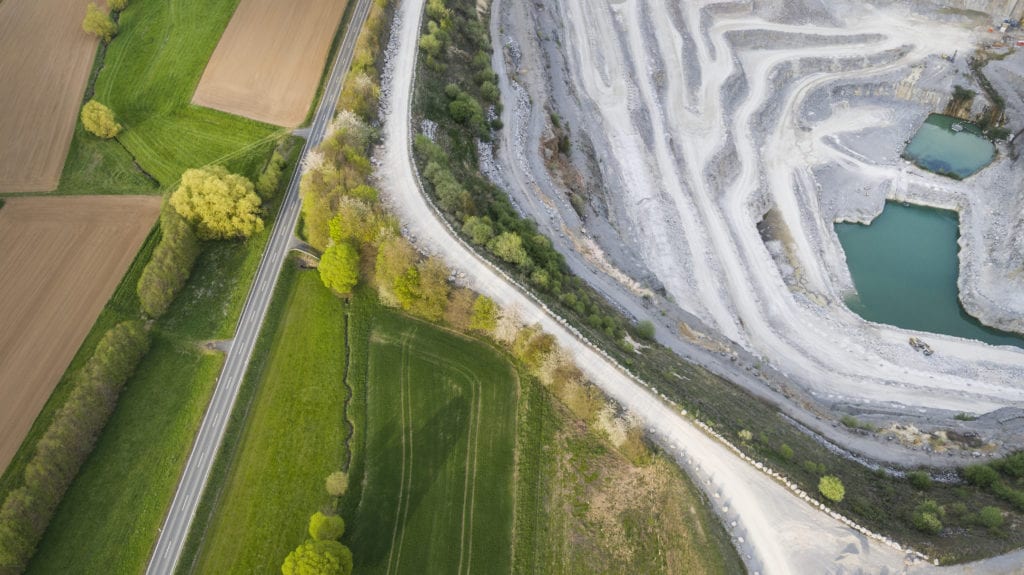Companies of all sizes and industries are actively adopting customer-centric sustainability as a business imperative. The Mining, Minerals, and Metals industries are no exception.
Beyond positive environmental, social, and governance (ESG) impacts, companies are also rewarded with long-term economic gain and competitive advantage.

Businesses, citizens, and governments agree that more needs to be done to achieve the Paris Agreement emission limitations of a +1.5°C or lower global temperature rise (above pre-industrial levels). This same message was clear in our Schneider Electric-sponsored seminar entitled “Sustainability at the Source, Getting it Right from the Start!” where three global organizations discussed their ongoing sustainability strategies and implementation.
Schneider Electric supports carbon emissions reduction efforts by:
- Providing end-to-end sustainability solutions, enabled via digital transformation
- Developing innovative technologies, including microgrids and renewables, addressing energy usage reduction by optimizing energy and operations management,
- Creating revolutionary strategies like circular economy or the transformation of traditional processes
Innovation is key to lowering steel making emissions
Tenova is a leading company specializing in sustainable solutions for the green transition of the metals industry. Their 2,300+ engineers, metallurgists, chemists, and experienced consultants across 19 countries have helped companies reduce costs, save energy, and limit environmental impact while improving work conditions by offering innovative technology design and services.
Over recent years, this company has emerged with the most sustainable technology portfolio in steel making. When steel is manufactured, blast furnaces typically use a large quantity of cooking coal, which is a significant source of global carbon emissions. In fact, according to their Executive Vice President, coal-fired blast furnaces are responsible for 92% of carbon emissions generated by the steel-making process.
However, recent innovations have helped to render steel-making operations more sustainable. In the case of direct reduced iron (DRI) plants, where electric arc furnaces fired by natural gas are being utilized, for example, CO2 emissions are reduced by 50% when compared to traditional blast furnaces that utilize coal. Approximately 30% of the world’s steel is now manufactured using electrical furnaces, which often use recycled scrap steel as the primary source of furnace feeder materials.
Companies are also working on methods to produce steel with zero emissions. As the steel industry in the near future is expected to produce nearly two billion tons of steel per year, new plants are being planned and built capable of producing hundreds and thousands of tons of steel per year using CO emissions-free hydrogen. In fact, Tenova is leading the effort in designing the very first hydro reduction plant in China (such plants feature the flexible, incremental utilization of hydrogen, which is capable of reducing CO2 emissions up to 95% across the entire steel production route). Such initiatives are helping industrial regions across the globe to achieve lower emissions faster.
Over the last 10 years, steel itself has also become both stronger and lighter.
Lighter vehicles produce much lower emissions and can now be built without undermining the durability and integrity of the vehicle’s structure. Accelerating the development of such materials is another way that a company contributes to overall carbon emissions reductions.
Leading cement production company takes sustainability to new heights
As urbanization continues to grow, the opportunity for carbon emissions reduction in the cement and concrete manufacturing sectors is significant.
Today, the world’s cement production generates about 8% of global CO2 emissions, similar to the level of emissions produced by the steel industry. One of the world’s leading cement producers, whose 72,000 employees operate across 80 countries, is keenly aware of its responsibility to increase the sustainability of cement production.
According to the head of environment and public affairs at their Canadian operations, the company has pledged to achieve net-zero carbon emissions by 2030. “Everyone is racing to decarbonize. We are making our contribution by developing the lowest carbon emission concrete and cement products possible,” he said.
Cement production uses high levels of thermal and electric energy to drive the kilns that produce the cement. This cement producer is pursuing ways to both reduce the amount of thermal energy needed and to develop kilns that can substitute alternative fuels for fossil fuels. This “geo-cycle’ approach uses materials such as non-recyclable plastics, textile industry and construction demolition waste, and wood fines (a bio-solid) to substitute for coal, pet coke, and even natural gas. In fact, in their new British Columbia plant, they will be co-processing over 48 million tons of waste and bi-products in their kilns as a source of combustion energy.
“We plan to solidify ourselves as not only a building materials company, but as a waste management company into the future,” he said.
To learn more about how Mining, Minerals, and Metals companies can accelerate their carbon emissions reductions, download the new Schneider Electric e-guide “Five innovative approaches to resource sustainability.” or watch our on-demand seminar, “Sustainability at the Source, Getting it Right from the Start.”
Editor’s Note: This post was originally published on March 18, 2021 and has been recently updated for accuracy and comprehensiveness.




Add a comment